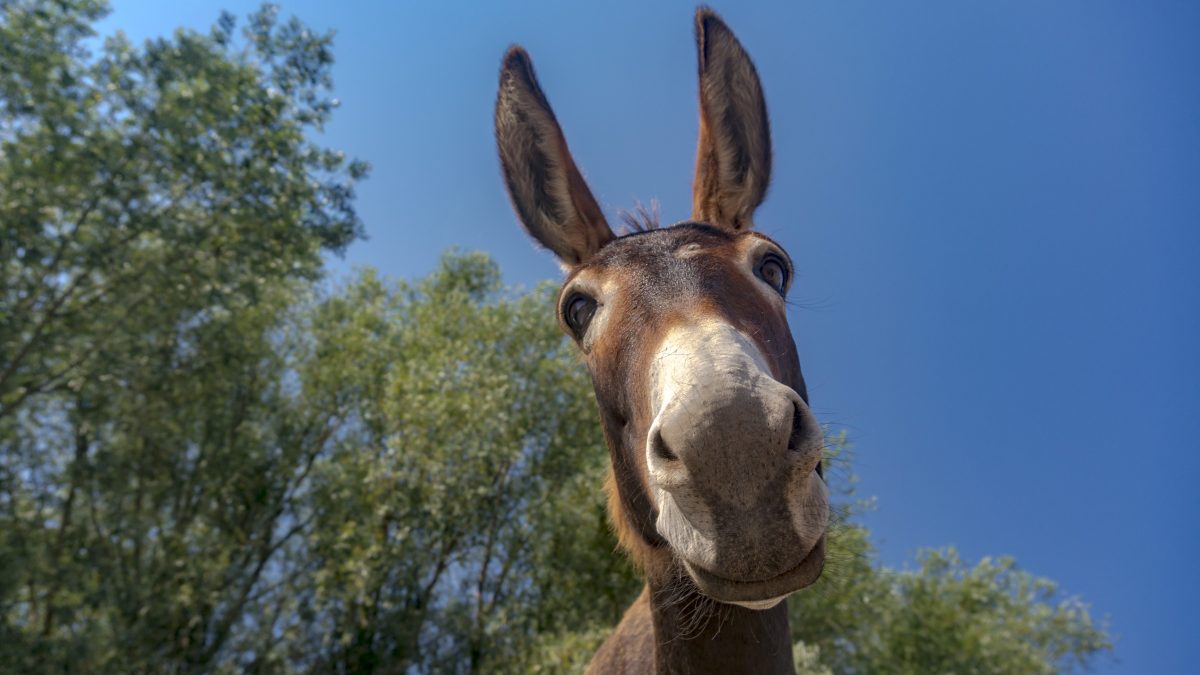The Sardinian Breed Of Donkey 0 Commentaires

Those who do not know Sardinia well may ignore that Sardinians turn up their noses, or worse, resent if instead of calling them Sardinians someone uses the term Sardegnoli which, even in Italian, refers only to animals. For the Sardinians, sardegnolo means “donkey”, “little donkey” and particularly referred to the typical rather small breed, the sardignolu "the donkey". Curiously, the -ign-ol component could recall the hinn-ul-u (m) (small mule) in Latin, and όn-os (donkey) in Greek, being therefore not a normal diminutive.
For millennia, the Sardinian donkey has associated its history with the island’s one, helping with agriculture, transport, travel and war enterprises. The dark stripe of the grey coat, lighter on the abdomen, on the dark circles and on the muzzles together with the small size well distinguish it from other Italian donkey breeds.
The donkey is called burriku in the southern regions, while poleddu and ainu is used in Barbagia and central Sardinia; molente is linked to its use with the grain mill.
Mechanisation then replaced the donkey for grinding cereals, transporting water and wood, ploughing, relegating it to the sole use of meat production, which obviously threatens the extinction of this breed. Consequently the total donkey population in the last 40 years has decreased from 38,000 to a few thousand, and the Sardinian donkey around 350 units.
Fortunately, since 2000, the Ministry of Agriculture and Forestry has established the "Anagraphic register of equine populations attributable to local ethnic groups", held by the Italian Breeders' Association, in which, among the donkey breeds, also the Sardinian donkey.
Thus, the Association for the protection of the Sardinian Donkey, ATAS, was born in Sardinia, and the creation of the Sardinian donkey park in Mui Muscas, Ortueri, (182km away from the Gabbiano Azzurro Hotel & Suites, covered in 2 hours and 20 minutes’ drive).
The Sardinian donkey, originally from Ethiopia (Equus aetiopicus), was introduced in Sardinia at the beginning of the third millennium BC. with the development of maritime trade. From East Africa it passed into Egypt, then into Asia Minor and the Aegean, Greece and the Balkan Peninsula, Sicily and Sardinia where, due to the particular environmental conditions, it seems to have undergone a reduction in its original size. Present mainly in Sardinia, the Sardinian donkey is now existing also in Lazio and Umbria, where it arrived following Sardinian shepherds and where there are several breeding farms.
In the 19th century, the Marquis of Mores, Duke of Asinara, imported the white donkey from Egypt which was used for the burden. The Asinara donkey, native to the island of the same name, 52 km2 of Mediterranean scrub combined with cultivated areas, located in the north west of Sardinia and being a penal colony closed at the end of the last century.
The white donkey (albino variation of Equus asinus) that inhabits the island of Asinara is important for its rarity but is not a completely wild animal. It looks a lot like the common Sardinian donkey and the peculiarity that distinguishes this animal is the white colour of its coat due to the albinism gene and for being kept isolated in the island. New-born donkeys are beautiful, all white and then as adults they become cream or off-white due to dust and dirt. They have blue eyes and pink lids.
One hundred donkeys have been estimated to be in Asinara, plus twenty more distributed in Sardinia. The Park, in order to preserve the genetic heritage of this species, has signed two specific schemes, with the Forest Agency of Sardinia and with the Faculty of Veterinary of Sassari, to allow continuous monitoring of the animal's health.
Ollolai, a about two hours’ drive and 144 km far from Gabbiano Azzurro Hotel & Suites, organised this summer the 19th edition of the Palio degli Asinelli, an annual donkey riding contest, that is run at night, to promote and enhance the Sardinian donkey, which in the past represented a precious asset for every Ollolaese family. The show seems to evoke for its originality, in miniature, the sumptuous and famous "Palio di Siena”, with flag-wavers, historical clothes. Currently there are five districts or vihinados, with colours and animals that distinguish them: Yellow, Red, Green, Black and Light Blue.
So, we all agree now that Sardegnolo is just the donkey, a nice and sweet symbol of an island who’s grateful to them for their work over the centuries.
“Behold, your king is coming to you; righteous and having salvation is he, humble and mounted on a donkey, on a colt, the foal of a donkey.” Zechariah 9:9
--
Written by Daniela Toti
Share your opinion with us!